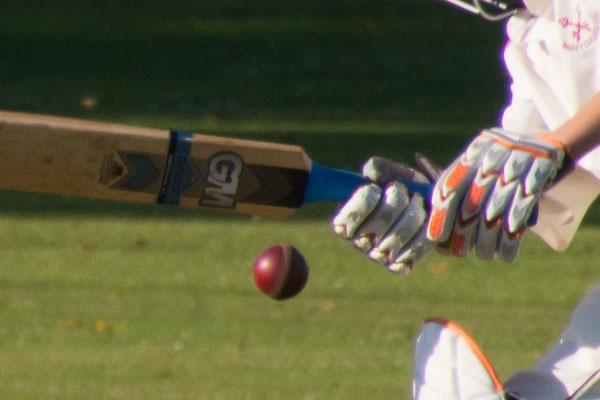Canon kyboshes the competition – full cinema system
Canon has launched, out of the blue as far as we were concerned, a complete fully featured Cinema HD production system including full-frame digital video camcorder and EF-fit lenses designed to compete head-on with the top offerings from Zeiss/Arri and Red.
The Cinema EOS system also competes with Sony right in the heart of Sony prime territory. It looks like nothing so much as an acknowledgement that Sony has attacked Canon’s primary still imaging market effectively, and Canon, instead of competing in that arena, has decided to hit their rival where it really hurts. Their announcement feels like ‘right, we’ll show them – this will be the best HD movie production system in the world’.
Porn film makers will be rubbing their hands with glee – or something, not sure if you call it glee…
At the heart of this is optical excellence. They have created a 4K (the higher resolution than 1080p HD, full large screen cinema format) lens system. Imagine these – they come in the ciné PL mount, but also in the full frame EF camera mount. You could use these on a regular Canon. And they will not have the shortcomings of lenses such as the 24-105mm f/4 L – these will be better than CZ quality if Canon is to secure a market share.
CN-E 14.5-60mm f/2.6 L S (Super-35 or APS-C is what the S stands for, like EF-S)
CN-E 30-300mm f/2.95-3.7 L S
CN-E 24mm f/1.5 L F (the F stands for Full Frame)
CN-E 50mm f/1.3 L F
CN-E 85mm f/1.3 L F
Look at those apertures – they are like Angenieux apertures! Bet you they are also true T-stop figures. Here’s their wording:
Wide-Angle and Telephoto Cinema Zoom Lenses for EF and PL Mounts
CN-E14.5–60mm T2.6 L S / CN-E14.5–60mm T2.6 L SP
CN-E30–300mm T2.95–3.7 L S / CN-E30–300mm T2.95–3.7 L SP
The four new Canon zoom cinema lenses comprise the CN-E14.5–60mm T2.6 L S (for EF mounts) and CN-E14.5–60mm T2.6 L SP (for PL mounts) wide-angle cinema zoom lenses, and the CN-E30–300mm T2.95–3.7 L S (for EF mounts) and CN-E30–300mm T2.95–3.7 L SP (for PL mounts) telephoto cinema zoom lenses. Each lens supports 4K (4096 x 2160 pixels) resolution, which delivers a pixel count four times that of Full HD (1920 x 1080 pixels), and offers compatibility with industry-standard Super 35 mm-equivalent cameras as well as APS-C cameras (Not compatible with 35mm full-frame or APS-H camera sensors).
Employing anomalous dispersion glass, effective in eliminating chromatic aberration, and large-diameter aspherical lenses, the zoom lenses achieve high-resolution imaging from the centre of the frame to the outer edges. Each lens is equipped with a newly designed 11-blade aperture diaphragm for soft, attractive blur characteristics, making them ideally suited for cinematographic applications.
The focal length range of 14.5–300 mm covered by the new zoom lenses represents the most frequently used focal lengths in theatrical motion picture production, a range that often requires a combination of three or more separate zoom lenses. Canon’s new wide-angle and telephoto cinema zoom lenses, however, offer a wider angle and powerful zooming to provide complete coverage across this range with just two lenses. The new wide-angle cinema zoom lenses will offer the industry’s widest angle of view among 35 mm digital cinema lenses with a wide-angle-end focal length of 14.5 mm (as of November 3rd 2011, according to published competitive data).
Zoom, focus and iris markings are all engraved on angled surfaces for improved readability from behind the camera. With a focus rotation angle of approximately 300 degrees and a zoom rotation angle of approximately 160 degrees, the lenses facilitate precise focusing performance while making possible smooth and subtle zoom operation.
The new top-end cinema zoom lens line-up can be used with standard manual and electronic movie industry accessories, as well as matte boxes. Featuring a unified front lens diameter and uniform gear positions, the lenses do away with the need to adjust or reposition accessory gear when switching between other lenses in the series.
Single-Focal-Length Cinema Lenses for EF Mounts
CN-E24mm T1.5 L F / CN-E50mm T1.3 L F / CN-E85mm T1.3 L F
Like their wide-angle and telephoto cinema zoom lens co-stars, Canon’s new CN-E24mm T1.5 L F, CN-E50mm T1.3 L F and CN-E85mm T1.3 L F cinema lenses deliver 4K optical performance. The three lenses, designed for use with EF mounts, are compatible with not only industry-standard Super 35 mm-equivalent cameras, but also 35 mm full-frame, APS-H and APS-C sensor sizes. The trio incorporates anomalous dispersion glass and large-diameter aspherical lenses for high resolution imaging throughout the frame, and features a newly designed 11-blade aperture diaphragm for gentle, attractive blurring.
With focus and iris markings that are easily visible from behind the camera, Canon’s three new fixed-focal-length lenses support convenient film-style operation and, offering a focus rotation angle of approximately 300 degrees, facilitate precise focusing performance.
The CN-E24mm T1.5 L F, CN-E50mm T1.3 L F and CN-E85mm T1.3 L F support standard manual and electronic industry accessories and matte boxes, and have a unified front lens diameter and uniform gear positions, eliminating the need for adjustments when switching lenses.
Costs
Is there a snag? Maybe. The cheapest of the prime lenses will be over £4000/$6,300 and the zooms will cost a cool… $47,000 each. That is not a misprint. That is not even my income. But it shows you how big the stakes are in movie making gear PROPER.
The movie camcorder
Then there’s the camera to go with them – the EOS C300/C300PL interchangeable lens digital video camcorder. It may only have an 8.29 megapixel Super-35mm CMOS sensor. It’s only 1080p but it claims to read coincident or complete RGB pixels for each pixel location, using 4:2:2 sampling, and to record at 50 Mbps (almost twice the data rate of the best DSLR video). It has twin CF card slots. It has many other features including things like metadata coding for better identification of lenses in edit work, and the capacity to be controlled remotely from an iPad or iPhone (with accessory WFT-E6B wireless transmitter).
A new DSLR
Canon is developing a new-concept EOS-series digital single-lens reflex (SLR) camera. Incorporating an enhanced version of the video-capture capability offered in the current EOS-series line-up, the new camera will be ideally suited for cinematographic and other digital high-resolution production applications. The model will be equipped with a 35 mm full-frame CMOS sensor and, enabling the recording of 4K video* (at a frame rate of 24P, with Motion-JPEG compression), will make possible the type of exceptional image quality and sublime imaging expression to be expected from the next generation of “EOS Movies.”
So why have I posted this on Photoclubalpha? Easy. I was still up and around at 1am when the news had come in by email. And it matters, because Sony will react to this. Canon has just moved in on their home territory, where they were already getting a foothold through EOS-movies and existing Canon video offerings, in a much bigger way. This could be the best thing Alpha owners could see happen because it will force Sony to update their lens range quickly and to improve the overall offering their DSLR division makes to their camcorder division (via adaptors).
– DK


















